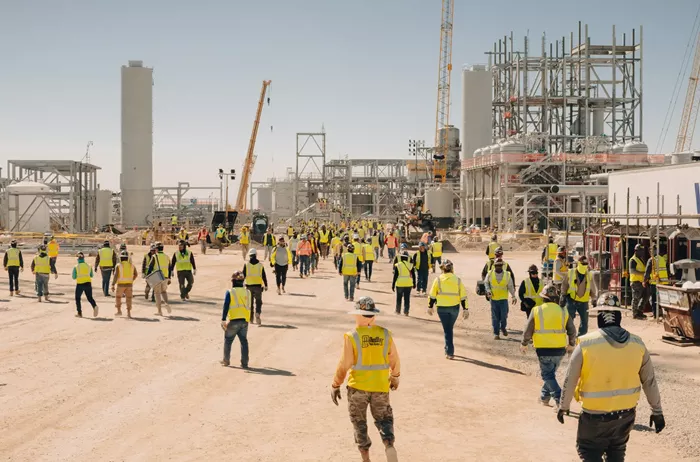This summer, a high-profile gathering took place in London, bringing together some of the world’s wealthiest figures, including Bill Gates, Amazon founder Jeff Bezos, SoftBank’s Masayoshi Son, and Saudi Prince al-Waleed bin Talal. Their discussion centered on a growing investment trend: funding companies focused on tackling climate change. Among their portfolio, four companies stood out with a bold ambition—developing technologies to extract carbon dioxide from the atmosphere for profit.
As global temperatures rise to unprecedented levels, fueled by continued carbon emissions, the financial world is rushing to support the emerging sector of carbon dioxide removal (CDR). This innovative field seeks to remove the excess carbon dioxide contributing to climate change, offering both environmental benefits and potential financial rewards.
Though the technology is still in its infancy and largely unproven on a large scale, its promise is undeniable. The concept of actively pulling carbon from the air seems like a logical solution, and as more businesses commit to reducing their carbon footprints, a market for these services is steadily expanding. Investors are keen to secure early positions in what they view as a burgeoning industry that is critical to mitigating global warming.
Since 2018, CDR companies have raised over $5 billion, according to investment bank Jefferies. Prior to that, the industry was nearly nonexistent. Damien Steel, CEO of Canada-based Deep Sky, which has raised more than $50 million for CDR initiatives, called it “the single greatest opportunity I’ve seen in 20 years of venture capital.” Steel added, “The tailwinds behind the industry are greater than most industries I’ve ever looked at.”
One of the largest backers of the CDR movement is Breakthrough Energy Ventures, a group founded by Gates. This group, alongside other investors such as Silicon Valley venture capitalists, private equity firms, and corporations like United Airlines, is helping to fuel the growth of over 800 CDR startups.
As part of corporate sustainability goals, more than 1,000 large companies have pledged to reduce their carbon emissions over the coming decades. To meet these targets, many have begun purchasing carbon removal credits. Microsoft, Google, and British Airways are among the companies that collectively committed $1.6 billion in 2023 to buy these credits. This is a sharp increase from less than $1 million in 2019, according to CDR.fyi, a website tracking the sector. Industry leaders anticipate that corporate spending on carbon removal could reach up to $10 billion next year, with McKinsey estimating the market’s value could surge to $1.2 trillion by 2050.
However, despite the influx of funding, carbon capture technologies remain far from providing a tangible solution to global warming in the short term. Currently, only a handful of facilities are operational, including projects in Iceland and California. The largest plants capture just a fraction of the daily carbon emissions produced globally. Even if hundreds of these facilities were constructed, they would still fall short of addressing even 1% of annual emissions.
Former U.S. Vice President Al Gore, co-founder of Climate Trace, a platform monitoring global greenhouse gas emissions, cautioned against overestimating the impact of carbon removal in the immediate future. “Let’s not pretend that it’s going to become available within the time frame we need to reduce emissions,” he said.
In fact, a 2023 United Nations report raised significant concerns about the technology, questioning its feasibility at scale and highlighting potential environmental and social risks. Instead, many scientists argue that the primary focus should be on reducing the burning of fossil fuels—the main driver of climate change. “We need to obey the first law of holes,” Gore added, “When you’re in one, stop digging.”
Carbon dioxide removal is part of a broader set of geoengineering technologies designed to manipulate natural systems to mitigate global warming. Other proposed approaches include altering the chemistry of oceans to absorb more carbon, genetically modifying bacteria to reduce agricultural emissions, and reflecting sunlight away from Earth using brightened clouds or aerosol injections.
Nevertheless, carbon capture remains the most heavily funded of these geoengineering efforts. While its short-term effects on temperatures may be modest, investors remain optimistic that as the technology matures and global emissions decrease, the impact of carbon removal will become more significant.
Experts suggest that even if the world successfully eliminates new emissions, some degree of carbon removal will be necessary to stabilize global temperatures. However, critics argue that the focus on carbon capture may undermine efforts to reduce fossil fuel use. Stanford professor Mark Z. Jacobson warned, “Carbon capture will increase fossil fuel production, there’s no doubt about it. It does not help climate one bit.”
Despite these concerns, investment and corporate interest continue to flow into the sector. Companies such as Stripe, H&M, J.P. Morgan, and Meta have pledged over $1 billion to purchase carbon removal services. Other major companies, including Airbus, Equinor, and Boeing, have also committed to paying for carbon capture.
For some businesses, the motivation is to offset emissions, while others see potential for future profit in the emerging industry. “This isn’t intrinsically tied to our day-to-day business,” said Nan Ransohoff, Stripe’s head of climate. “But we care a lot about progress and trying to help the world move in the right direction.”
While the future of carbon dioxide removal remains uncertain, its rapid development and growing financial backing indicate that it will continue to be a focal point in the fight against climate change.
Related topics:
- How Many Rupees Gold Today?
- Gold Prices in Chennai Rise Amid U.S. Elections
- Gold Falls Over 2% After Fed Signals Slower Rate Cuts in 2025


